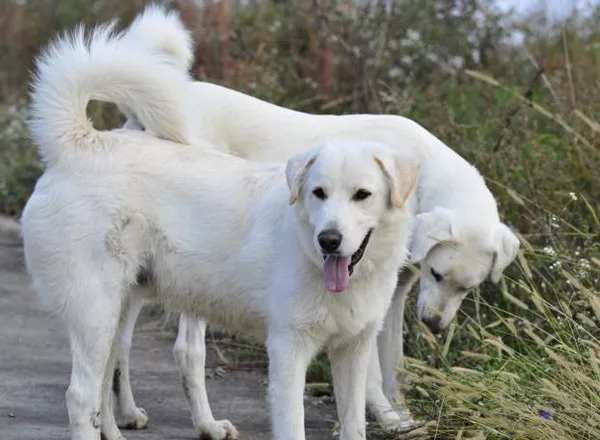Akbash dogs, renowned for their majestic appearance and unique characteristics, have garnered considerable attention among dog enthusiasts. One of the aspects that pique curiosity is their roaming behavior. In this article, we will delve into the question: “Do Akbash Dogs Roam?” by exploring various facets of their nature, origin, and habits. We will examine why Akbash dogs may exhibit roaming tendencies and provide valuable insights for owners and potential breed enthusiasts.
1. Understanding Akbash Dogs:
Akbash dogs, originally bred as livestock guardian dogs in Turkey, boast an impressive lineage that dates back centuries. These magnificent creatures are known for their white coats, which serve not only as a symbol of purity but also as effective camouflage in their natural environments. To comprehend their roaming behavior, we must first understand their roots.
a. Historical Origins: Akbash dogs have a rich history deeply entwined with their role as protectors of livestock. This historical context can shed light on their instincts and behavior.
b. Physical Attributes: Discuss the physical characteristics of Akbash dogs, emphasizing their strength, size, and agility, which are essential for their primary role as guardians.
2. Roaming Tendencies in Akbash Dogs:
Akbash dogs have earned a reputation for being independent and self-reliant. These qualities can manifest as a proclivity for roaming. Let’s explore this aspect in more detail.
a. Independent Nature: Akbash dogs are known for their independent thinking, which can sometimes lead them to explore beyond their immediate surroundings.
b. Territorial Instincts: Highlight how their territorial instincts may drive them to roam in order to protect their designated territory and livestock.
c. Socialization Factors: Discuss the importance of socialization and how it can influence their behavior, including roaming tendencies.
3. Addressing Roaming Behavior:
For owners of Akbash dogs, understanding and managing their roaming tendencies is crucial. Here are some practical steps to address this behavior:
a. Training and Socialization: Emphasize the significance of early training and socialization to curb excessive roaming and ensure they understand boundaries.
b. Exercise and Stimulation: Suggest regular exercise and mental stimulation to keep Akbash dogs engaged and less likely to roam out of boredom.
c. Secure Enclosures: Recommend the use of secure enclosures or fencing to prevent unauthorized roaming and keep both the dog and surrounding community safe.
4. Benefits of Owning Akbash Dogs:
Despite their roaming tendencies, Akbash dogs offer a plethora of benefits to their owners. Here are some compelling reasons why individuals choose to bring them into their homes:
a. Loyal Companionship: Discuss how Akbash dogs can be incredibly loyal and loving companions when properly trained and socialized.
b. Effective Livestock Guardians: Highlight their proficiency in protecting livestock, making them valuable assets on farms and ranches.
c. Beautiful and Majestic Appearance: Mention the aesthetic appeal of Akbash dogs, which often captivates dog enthusiasts.
5. Expert Advice and Conclusion:
To conclude, it’s essential to seek guidance from experts and experienced Akbash dog owners to better understand and manage their roaming tendencies. By combining knowledge, training, and responsible ownership, Akbash dogs can thrive in various environments while being cherished members of the family.
a. Consulting Experts: Encourage readers to consult with veterinarians and dog behavior specialists for personalized guidance.
b. Responsible Ownership: Emphasize the importance of responsible ownership in ensuring the well-being of Akbash dogs and their communities.
In summary, while Akbash dogs may exhibit roaming tendencies due to their independent nature and guardian instincts, understanding their history, behavior, and implementing proper training can help mitigate this behavior. Owning an Akbash dog can be a rewarding experience, provided that potential owners are well-prepared and committed to meeting their unique needs.


